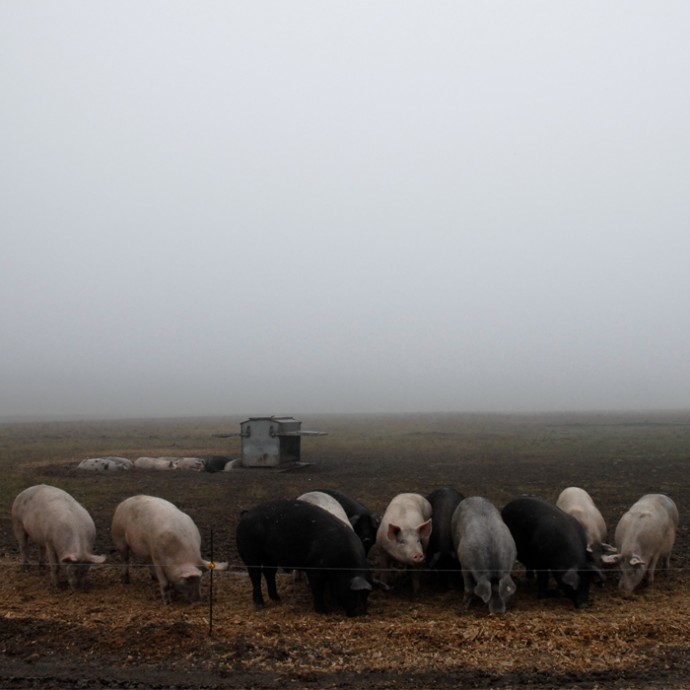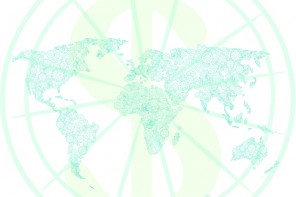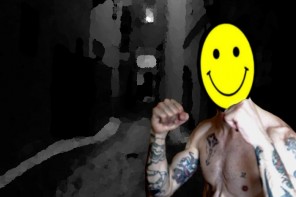Like Don Quixote, we two set out, one vegetarian and one avid meat-eater, to find the story behind one of the biggest pork-eating nations in the world – ambitious, we know, but nevertheless interesting. Having encountered weeks of dead ends, hanging up, unreturned calls, and a general lack of enthusiasm from the industry, we began to change tack. We fast realised there was little point in chasing the big bad wolves (i.e.: the intense factory farms), despite the exposure that they deserve, we instead tried gain a more personal and intimate insight into the scene.
Thus we found our three candidates, all chosen with the aim of touching on as many aspects of ethical meat farming as we could. Which brings us on to candidate number one: Bernd Schulz, a middle-aged Brandenburg native with a pig farm in Gömnigk. Bernd’s name is synonymous with organic pork farming in Germany. We found him through Meine Kleine Farm (MKF), a Berlin-based organisation set up in 2012 under the slogan “We give meat a face”. Think dating site, but instead of a person, your date is a pig and instead of romantic gazing (not grazing) and long walks on beaches, you eat your date. Each pig has a profile with various pictures including the classic over-the-shoulder pose, close-up portraits, full body shots, and last but certainly not least, the rear view angle. The pig’s slaughter date is stated alongside details of family history, characteristics, and physical attributes. MKF also adds some touching details such as “the barrow shacked up with a pink pig lady in a small hut, cute”. After your research, you then proceed to choose the product you want – pate, sausages, bacon, liver sausage, corned beef, etc.
Schulz is certainly not lacking in experience in pig farming – he worked in various different types of farms, both free range and intensive indoor farms, before opening up his own organic farm. When asked how exactly he found MKL he laughed and responded “I didn’t find them, they found me”. They asked if he would be interested in a new project and sure enough he was.
The journey out to Schulz, which began around 6am, was trying to say the least. Hopping off the train at Brück train station made us both suddenly self conscious about our city slicker apparel. To set the scene: 7.30am, two mediocre looking girls (the charm of modesty and all that), a one street town, a fast-descending fog, and a single passing car ever 25 minutes. Stranded in the middle of nowhere we made our way to Schulz’s house where, after a few gentle knocks on the front door, we were greeted by his angry neighbour who stuck his head out the window to exclaim that Schulz was more than likely at his farm. His farm, but of course!
Schulz answered his phone and came across as if he was in the middle of something as he barked orders that resembled those heard in the film Babe. It turned out that he had forgotten our appointment and he was occupied with the annual check on the farm and some camera crew that were on their way out. He barked some directions down the phone that I assume only some local Brück-onians could understand – though Brück may only have one road, it has many farm lanes, one of which leads to the neighbouring town Gömnigk. One thing led to another and after walking aimlessly looking for a pig, or any bloody four-legged creature in a field that resembled a pig, we luckily met a coworker of Schulz who took us along in her car. Despite the ordeal, he was happy to see us.
Schulz paraded around his farm like Robinson Crusoe on his desert island and the pigs resembling hundreds of speechless Fridays. He is the core of the farm and it is a full-time job: “I am here every day. I can not leave them. Without me it doesn’t work, it doesn’t function. There is too much to forget, too much to do wrong” he says. His devotion towards the pigs is astounding.
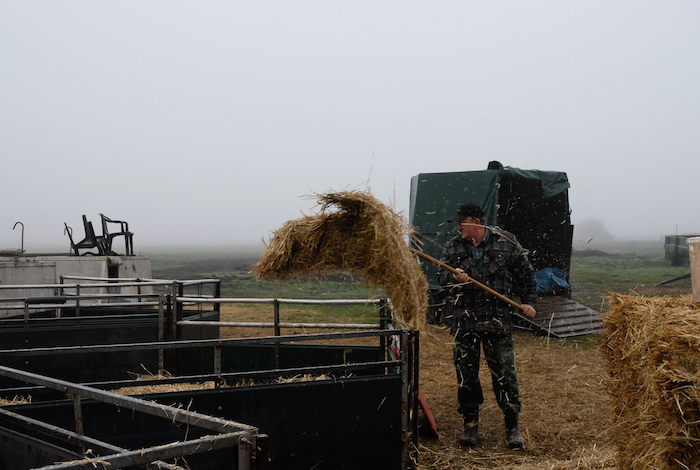
Amongst his 35 hectares of land, were large fields and some closed off pens with pigs spotted around. The pigs were, needless to say, quite adorable and would make one consider stealing a piglet while Schulz’s back was turned (we decided against this upon seeing him do various count checks of each field). A small fraction of Schulz’s organic and free range pigs are part of Meine Kleine Farm, and the rest are part of his own Backschweine-Tenne Farm. One thing that is startlingly obvious from visiting the farm is the space that these pigs have. Schulz is not your average farmer but rather a modern man who is well rehearsed in the current trends of meat-eating. He is very open to visitors on his farm and invites the public almost weekly for a variety of events including a trip to the slaughterhouse. He believes in transparency behind meat farming and takes every step he can to prove that. Consider him a porcine Edward Snowden, if you will.
After seeing some unexpectedly tender moments amongst Schulz and his pigs – some tender nudges and cooing noises – I asked about his relationship with the animals. To which he responded in his pragmatic manner “Ahja, it always goes the same way: here I have the feed, you stroke their heads, and here you have 35 hectares. It is a very clear pattern actually”, and we moved on swiftly. Schulz’s pigs are let roam about for roughly ten months and then it’s slaughter time and they’re carted off to his trusted slaughterhouse.
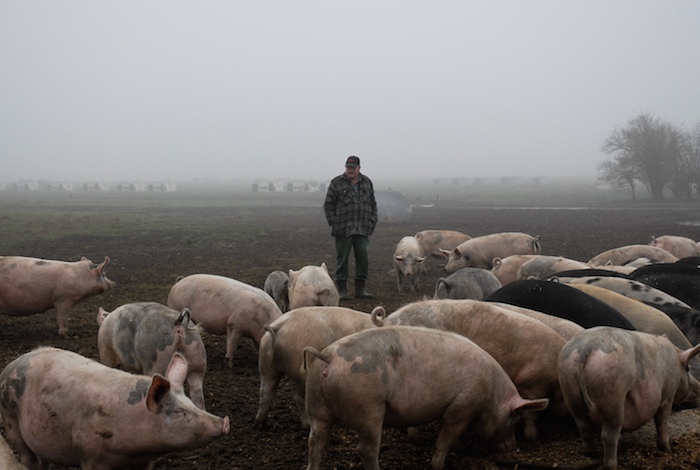
Meet candidate number two: Simon Ellery, a New Zealand native who goes by the name of The Sausage Man Never Sleeps – it’s admittedly difficult to conceptualise while keeping a straight face. The setting: Erchinger Fleisch und Wurstmanufaktur butchers up in Prenzlauer Berg. Fully clad in hairnets and flimsy overalls we met up with a very enthusiastic Simon who works there on a weekly basis once the Erchinger team are finished up with their daily duties in the early afternoon. As Simon began to set up camp, we tried our hardest to find an unused corner to stand out of the way in. Covered in white tiles, heavy machinery, big burly German men (and one even burlier woman), we were feeling a bit insignificant to say the least. The crew were eager to get off work and were bustling about making sure to leave the place spick and span for the following day.
Simon remained unfazed by it all. He comes from a rich farming background – his father at home always has a freezer full of home-killed pigs or cows waiting to be cut up in the back shed. Simon has been working in the meat industry since he was 16, minus a short hiatus, and then found his way to Berlin where he started off his own project. The Fleischmeister himself specialises in gourmet sausages, bacon and some serious black pudding which can all be found at his stall at Markthalle Neun or at various eateries around the city such as Papi Crunch or Antipodes. He is fast becoming quite the sausage man about town.
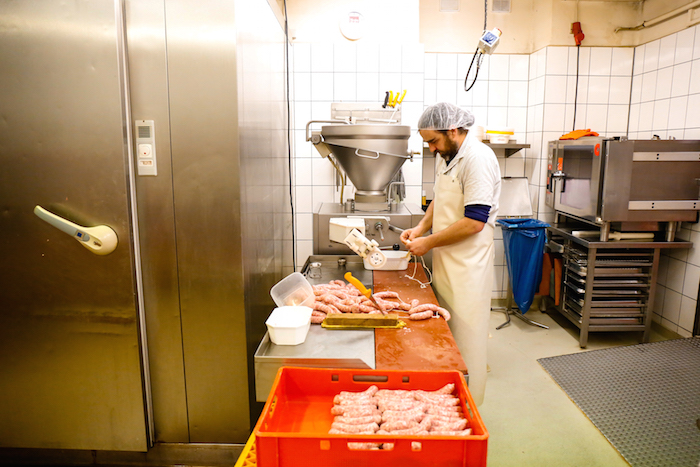
Simon is working away, conscious of the time restraints in the butchers’ premises, whilst being the perfect host and balancing two inquisitive young ladies all in his stride. As he is mixing the jalapeño and cheddar with the raw pork, and discreetly throwing me the odd ball of the mixture (I stand there like an open-mouthed dog waiting for my next fix), he gets down to business and starts discussing sourcing his meat. Before joining the Markthalle, he used the normal industrial meat simply out of the necessity of having to start somewhere. As soon as one of his teachers at his Fleischmeister course recommended Bäuerliche Erzeugergemeinschaft Schwäbisch Hall, he’s never looked back. Simon is confident of their quality and standards – “The animal welfare is more important than the slaughtering. The pigs have enough space to breath and roam around”. Admittedly Simon has not made it down to see the setup yet, but it’s on his cards, he is however well aware of the slaughtering process. The pigs spend minimal time being transported to the slaughterhouse keeping stress at a minimum. They then use the captive bolt pistol to stun the pig and the rest is history.
It seems as though meat producers are faced with a similar catch-22 situation that consumers are presented with in terms of enjoying the product but having to pay the extra price for well-sourced meat. Simon is confident that he will not be returning to the factory meat, and also has hopes to soon source his meat locally. As he evolves, so too does the quality of his products. It does seem as though it has to be a give and take situation in the beginning and he explains frustratedly how he does not yet use organic meat because he is not certified and so using it wouldn’t make sense for him at the moment.
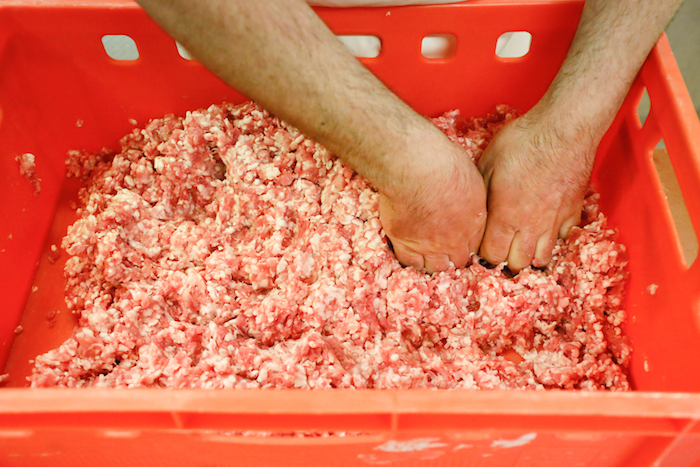
Simon recently took part in the Schlachtfest, an intimate series of events involving Berlin chefs and eaters and one lucky animal, organised by Mr. Susan and Streetfood Thursday’s Kavita Meelu. There have been two events to date, one cow-themed and one pig-themed, and each take a similar format: a limited number of people gather to go to the slaughtering of the animal, and then for the main event they invite a selection of chefs to cook the various parts of the animal and serve it up whichever way they see fit. The concept behind it is to pay respect to a new animal each event and to gather a community to witness the process of field to plate style eating. Simon talks of the killing itself and how stress-free the whole process was. He describes how once the pig was chosen, the farmer walked out in the field with his shotgun and shot the pig straight in the head. In the meantime the pig’s mates were pretty nonplussed and continued going about their day. George Orwell had it right – “All animals are equal but some animals are more equal than others”.
Simon mentioned how after the event there were very graphic photos of the butchering of the pig and they were unsure as to whether they should be published, given that many people will even turn their noses up at the backstory behind their €1 sausages. However, Simon is adamant that this is reality, that the meat on your plate was once a living animal, and that we need to know our meat. He is similar to Schultz in his attitude towards a transparent meat industry, and he is doing his bit to enforce this: “Rather than a butcher being behind closed doors where you wonder what goes on in there, I like to make it more open, with photos and letting people see how it’s done, and teaching people about it all. As opposed to brushing it under the carpet. It’s all about education, people seeing stuff and learning about it”. And then Simon’s approach all became clear. He was standing there in his element, after inviting us with an intimidating camera and a brightly coloured notebook and pen, to poke around his daily business. This was his method of education, and despite probably regretting letting us distract him, resulting in one or two oddly shaped sausages, he was delighted to have us.
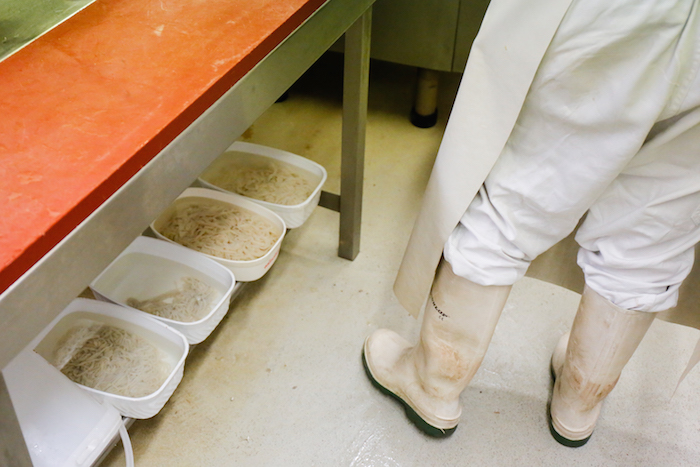
Candidate number three, Caspar Pellengahr, was a relief for both Alice (the photographer) and I. Having been friends prior to any of our meat escapades, our last few meetings had been surrounded by pork – dead and alive, cooked and uncooked, happy and unhappy, and so we were delighted to meet Caspar with a minimal amount of meat in the vicinity, but rather just a few rifles and shotguns splashed about the place. He took us to the patio of his Zehlendorf family home, where he talked us through hunting, his favourite pastime. He comes from a hunting family – his father, sister, younger brother, and the dog, Skip, all enjoy hunting as much as he does. What was initially shocking was to see an 18 year old, so well-spoken, passionate, and most importantly knowledgeable on such a complex topic. We sit there in the early April sun with delicious (vegetarian) snacks brought out by Caspar’s mother and Skip racing around the garden in circles. Side note: as I am in a temporary state of dog envy, I ogle little Skip an uncomfortable amount, thinking that I am always right in my choice to avoid little dogs with so much to prove * (this statement to be retracted three paragraphs down). Caspar weaves effortlessly in and out of the traditions of German hunting, something which I’m sure most of you are aware, is not that simple to be so knowledgeable on – from the racoon dog introduced from East Asia in the 1960’s, to the sought after red stag, and right through to Bruno the Bear, the 2006 Italian flaneur of Bavaria.
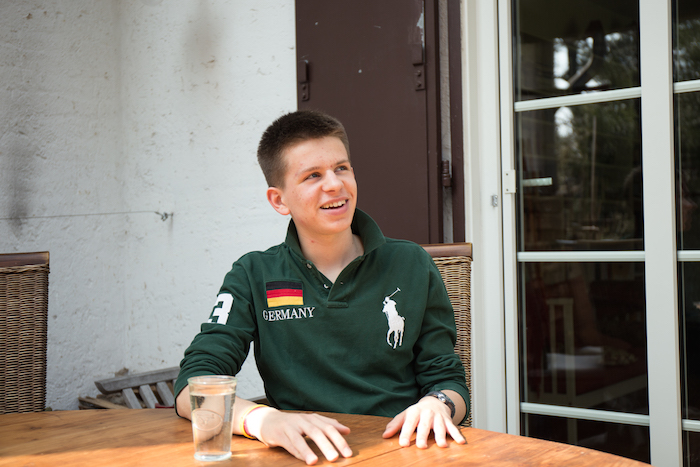
His wealth of knowledge did not originate merely from reading heaps of hunting magazines, but also from the intense studying he did for his hunting exam. He explains that only a fraction of Germans have a hunting licence and that the exam is extremely difficult. He is also well aware of the growing trend of sourcing your meat; “On one hand there are more vegans and vegetarians but on the other there are more hunters. People are becoming more conscious about sourcing their food well. They are either interested in becoming vegetarian or else sourcing, or in some cases hunting, their food themselves”. Leading from the increasing demand for game meat, I asked Caspar about the monetary value of killing boar for him and his family. He didn’t give me the answer I was expecting. Because he and his family don’t own their own hunting grounds but instead use a friend’s land, when they kill an animal the body technically belongs to the landowners. For many animals they kill on this land the Pellengahr family buy them, take them home, butcher them, freeze them and eat them. He is well aware however, of the money that is on offer from game butchers for a boar and of the demand on the market for game as game meat is organic meat.
Caspar distinctly remembers the night he shot his first boar, it reads like a Thomas Gray elegy. It was moonlight, he was freezing but nevertheless remained focussed, and finally a boar with his name on it came strolling along and he killed it with a clean shot. For each year hunting he has killed one boar and out of the three boar he shot, he ate one of them. One would assume that there would be a certain sense of pride, accomplishment or satisfaction involved with eating meat that you have killed yourself but Caspar denies any such feelings: “I’m happy I killed the animal but I wouldn’t say I feel pride. It’s hard to describe. You feel happy that the boar has had a good life”. Upon hearing all this I was stripped of any preconceived notions I had of the testosterone-fuelled male attitude to hunting and I left filled with a sense of respect for the sport so steeped in tradition and honour.

The method of killing boar is very precise in Germany. Catching a boar in a trap is forbidden. The ideal way is a clean shot to the chest with a gun of a certain calibre – the smallest bullet to be used on a boar is 6.5mm. There are no restrictions on where you shoot but the typical aim is for the heart so that the boar doesn’t escape injured which would prolong the suffering. The more effective hunting method for boar is a driven hunt whereby dogs like Skip and beaters (men in orange vests) herd the boar towards a row of hunters who are waiting. Not only is it a social event for the community to look forward to, but it can also yield up to 30 boar in one day. Caspar explains that the advantage to shooting many boar over such a short period of time is to lessen the stress for the animals and the environment. It also possibly reduces the risk of boar-dom setting in.
* Caspar quickly went on to praise Skip and tell us how the whole family are so grateful to have such a talented young dog, I, in the meantime, felt ashamed at my quickness to judge the accomplished young dog. Skip is an animal of hunting tradition and apparently required little to no training. She is a natural at boar hunting and is one of the best in the game during a driven hunt – she calmly seeks out the boar and draws everybody’s attention to it without losing the plot, like many of the other terriers do. I quickly moved past the thought of Skip being an animal of more worth than me.
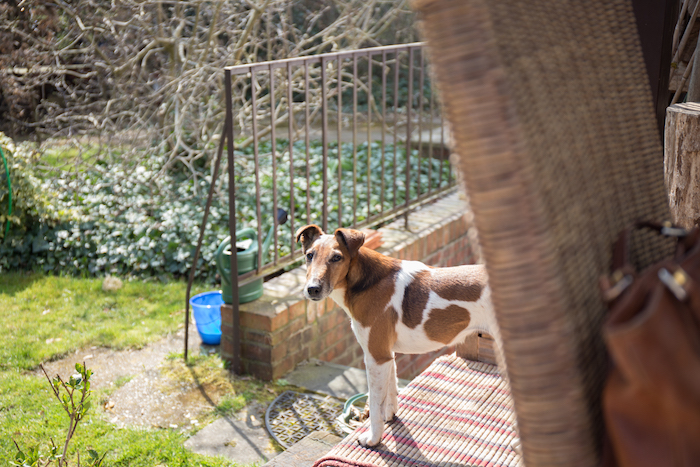
In typical teutonic fashion the hunting and killing of boar is clinical, efficient and practical (at least for the hunter that is). Unlike big game safari hunting, it is not primarily driven by the trophy mentality, and the kill is more important than the chase.
I am sure it would be oddly reassuring to all those pigs out there happily frolicking in the muck, that they could be the lucky pig to be next dispatched to the glorious sty in the sky by a stress-free shotgun bullet to the head (as distinct to an anxiety ridden shotgun bullet to the head) and furthermore that he, or she, will then be devoured by a humane, compassionate sausage-eating connoisseur, and not some carniverous charlatan, oblivious to the provenance of his delicacy. To be sure there is a gritty realism to the philosophy and well intentioned ideals of Schultz, Simon, Caspar and their ilk – after all we have been hunting, killing and consuming wild and domesticated animals ever since Fred Flintstone first hit a dinosaur with a stone club and got away with it, and if the animal can enjoy a happy, if short, life and then be humanely slaughtered, surely this is to be commended.
As we come to the end of our little journey, I’m sure it is blindingly obvious that all the dots have been joined, all except the final one, the slaughter. Unfortunately we could not find access to a slaughtering of a pig, and I guess the question on all of your lips is, “if you did, would you still be writing this article?”, and the answer is that I can only hope so. Although ignorance is bliss, in an age filled with doubt, criticism, open information and questions, it is important to, at the risk of sounding like Oprah, find your own truth, and there sure are enough resources to do so.

